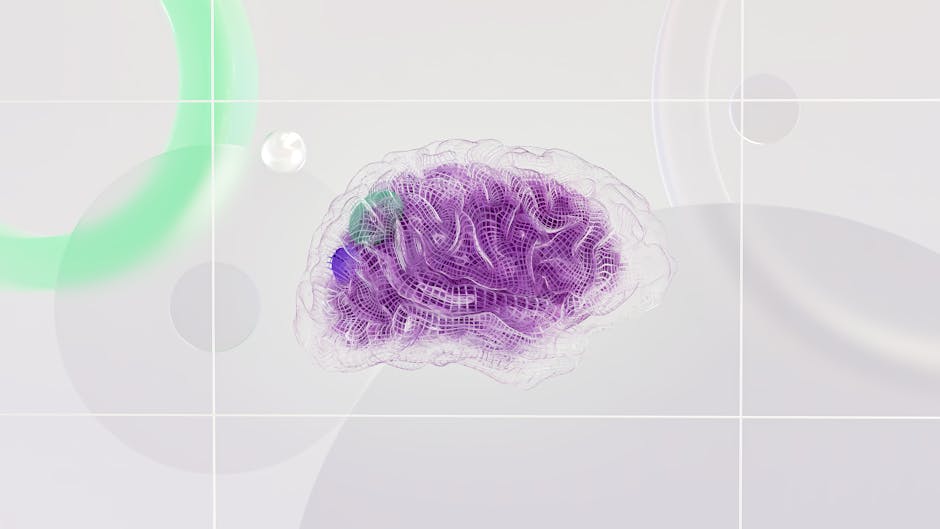Introduction to Color Models
Color models are mathematical representations of color that allow us to describe and reproduce colors in digital environments. Different color models organize color differently and serve different purposes. Understanding the various color models and when to use each is fundamental for digital designers, developers, and anyone working with color in digital media.
The color model you use affects how you specify colors in code, how you think about color relationships, and how effectively you can communicate color specifications to others. Each color model has specific strengths and makes certain color tasks easier or harder.
In this guide, we'll explore the four most important color models for digital work: HEX, RGB, HSL, and HSV. We'll examine how each works, what advantages and disadvantages each offers, and provide guidance on when to use each model.
RGB Color Model
RGB stands for Red, Green, Blue. It's an additive color model where colors are created by combining red, green, and blue light in different intensities.
In the RGB model, each color channel (red, green, blue) is represented as a value from 0 to 255, where 0 means no light and 255 means maximum light. By mixing these three colors in different proportions, we can create any color visible on a screen.
For example, pure red is RGB(255, 0, 0), pure green is RGB(0, 255, 0), pure blue is RGB(0, 0, 255), white is RGB(255, 255, 255), and black is RGB(0, 0, 0).
RGB is the native color model for screens and monitors. Every pixel on your screen is created by mixing red, green, and blue light, making RGB the fundamental color model for digital displays.
Advantages of RGB
RGB is intuitive for understanding how screens work. It directly corresponds to how monitors display color, making it useful for understanding color behavior on screens.
RGB is easy to work with programmatically. Being numeric values, RGB colors are simple to manipulate with code.
RGB is widely supported. Nearly all color tools, design software, and code support RGB.
Disadvantages of RGB
RGB is not intuitive for human color selection. Most people don't think about color in terms of red, green, and blue proportions. It's difficult to mentally visualize what RGB(152, 78, 201) will look like.
RGB makes certain color tasks harder. Creating a color scheme where colors are slightly lighter or darker isn't intuitive in RGB. Want to make a color 10% lighter? RGB doesn't directly support that concept.
RGB doesn't clearly represent color perception. Two colors with similar RGB values might look quite different to humans, and vice versa.
When to Use RGB
Use RGB when working with code and web development. Most CSS and JavaScript color specifications accept RGB.
Use RGB when interfacing directly with screen technology or working with video and digital media.
Use RGB when you need numeric precision or programmatic color manipulation.
HEX Color Model
HEX (hexadecimal) is a way of representing RGB colors using base-16 numbers instead of base-10 numbers. Each color is represented as a six-character string preceded by a hash symbol.
In HEX notation, the first two characters represent red (00-FF), the next two represent green, and the last two represent blue. Each pair can range from 00 (0) to FF (255) in hexadecimal.
For example, pure red is #FF0000, pure green is #00FF00, pure blue is #0000FF, white is #FFFFFF, and black is #000000. The color in our earlier RGB example, RGB(152, 78, 201), would be #985EC9 in HEX.
HEX is essentially RGB in a different notation. It represents the exact same color information but using hexadecimal notation instead of decimal.
Advantages of HEX
HEX is compact. Representing colors in HEX notation is shorter and more convenient than writing RGB(255, 0, 0).
HEX is the standard in web development. HEX has been the traditional color format for HTML and CSS for decades, making it the de facto standard.
HEX is supported everywhere. Every color tool and web browser supports HEX colors.
HEX is easy to copy and paste. The compact format makes it easy to share color specifications.
Disadvantages of HEX
HEX is less intuitive than RGB for most people. Hexadecimal notation is not something people naturally use.
HEX is not more intuitive than RGB for color selection or manipulation. Like RGB, HEX doesn't directly represent human perception of color.
HEX readability can be challenging. Looking at #985EC9, it's not immediately obvious what color that represents.
When to Use HEX
Use HEX in CSS and HTML. This is the traditional standard for web colors and is what most CSS designers have used for years.
Use HEX when creating color palettes to share with developers. Developers expect HEX notation.
Use HEX when you need a compact notation for colors.
Use HEX in color picking tools where you need to display colors in a standard format.
HSL Color Model
HSL stands for Hue, Saturation, Lightness. It's a human-friendly color model that represents color in terms of attributes that humans naturally understand.
In HSL, a color is specified by three components:
Hue is the color itself, represented as an angle on a color wheel from 0 to 360 degrees. 0 is red, 60 is yellow, 120 is green, 180 is cyan, 240 is blue, 300 is magenta.
Saturation is the intensity of the color, represented as a percentage from 0 to 100%. 0% means the color is completely desaturated (gray), 100% means the color is fully saturated.
Lightness is how bright or dark the color is, represented as a percentage from 0 to 100%. 0% is black, 50% is the pure color, 100% is white.
For example, pure red is HSL(0, 100%, 50%), a lighter red might be HSL(0, 100%, 70%), a darker red might be HSL(0, 100%, 30%), and a desaturated red might be HSL(0, 50%, 50%).
Advantages of HSL
HSL is intuitive for human color selection. Thinking about color as hue (which color), saturation (how intense), and lightness (how bright) matches how humans naturally think about color.
HSL makes color tasks easy. Want to make a color lighter? Increase lightness. Want to make it less intense? Decrease saturation. Want to change the actual color? Adjust hue.
HSL is excellent for creating color harmonies. Because hue is on a 360-degree wheel, creating complementary colors (opposite on the wheel), analogous colors (adjacent on the wheel), and triadic colors (equally spaced around the wheel) is straightforward.
HSL simplifies color schema generation. Creating consistent color schemes with related colors is much easier in HSL than in RGB or HEX.
Disadvantages of HSL
HSL is less familiar to many developers. While gaining popularity, many developers are more familiar with RGB/HEX.
HSL doesn't directly match how screens work. While RGB is the native color model for screens, HSL is an abstraction.
HSL readability can be challenging. Looking at HSL(240, 75%, 50%), the specific color isn't immediately obvious.
When to Use HSL
Use HSL when designing color schemes. HSL makes it much easier to create related colors and color harmonies.
Use HSL in CSS when you want readability and flexibility. Modern CSS supports HSL, and using HSL in CSS makes color values more meaningful.
Use HSL when creating variations of colors. If you're creating a button and need lighter and darker versions, HSL makes this trivial.
Use HSL in design tools and color pickers that focus on human color perception.
Use HSL for programmable color changes where you want to adjust specific color attributes.
HSV Color Model
HSV stands for Hue, Saturation, Value. It's similar to HSL but uses a different model for lightness/brightness.
In HSV, components are:
Hue is the same as in HSL, an angle from 0 to 360 degrees representing the color itself.
Saturation is the intensity of color, from 0 to 100%. Like HSL, 0% is gray, 100% is fully saturated.
Value represents brightness, from 0 to 100%. 0% is black, 100% is the brightest version of the color.
HSV differs from HSL in how it represents brightness. In HSL, a color's pure form is at 50% lightness, and increasing lightness beyond that moves toward white. In HSV, pure color is at 100% value, and you don't have a separate white point.
For example, pure red is HSV(0, 100%, 100%), a darker red is HSV(0, 100%, 50%), and a desaturated red is HSV(0, 50%, 100%).
Advantages of HSV
HSV is intuitive for artists and designers. Many traditional design tools use HSV because it matches how artists think about color.
HSV is excellent for color picker interfaces. HSV maps naturally to the typical color picker interface with a color wheel and a saturation/value square.
HSV is used widely in design software. Most design applications use HSV as their primary color model.
Disadvantages of HSV
HSV is less intuitive for web developers. Most web color work uses RGB or HSL.
HSV is not supported directly in CSS. Web developers must convert HSV to RGB or HSL for use in stylesheets.
HSV doesn't have a clear advantage over HSL for most web design tasks. Both are human-friendly, and HSL maps more directly to CSS.
When to Use HSV
Use HSV in design tools and color pickers. HSV is the standard for design software.
Use HSV when you're primarily working in design applications that use HSV natively.
Use HSV when creating color picker interfaces. HSV maps naturally to typical color picker UI patterns.
Choosing Which Color Model to Use
The choice of color model depends on your context and task:
For web development in CSS, use HEX for compatibility or HSL for readability and flexibility. Modern CSS supports both well.
For design work, use HSV in your design tool (which likely uses it natively) and then convert to HEX or RGB for web use.
For creating color schemes and harmonies, use HSL because its structure makes creating related colors straightforward.
For JavaScript and programmatic color work, use RGB because it's numerically convenient, or use HSL if you need human-friendly adjustments.
For sharing colors with developers, use HEX as the standard format.
For precise screen color matching, use RGB because it directly corresponds to screen output.
Understanding the strengths and weaknesses of each color model allows you to choose the most appropriate one for your task, making your color work more efficient and your colors more accurate.



